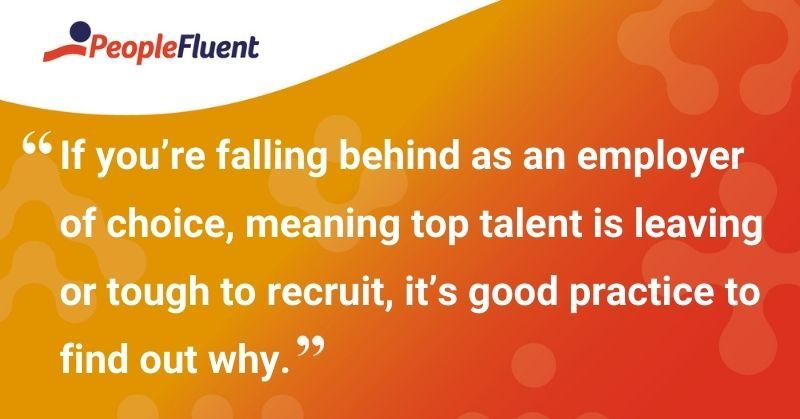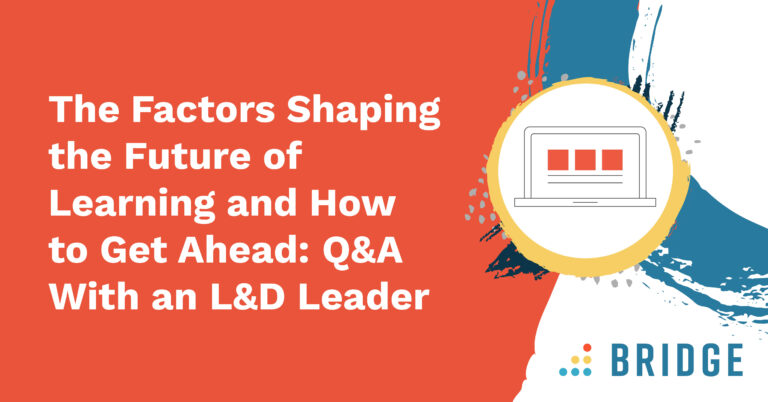When it comes to knowledge, it’s often said that ‘you don’t know what you don’t know’. And while that may be true, in today’s rapidly-changing HR world, being in the dark about your organization’s talent simply isn’t an option. So what can you do to gain overall visibility of the skills and talent you have at your fingertips? One way is by using workforce analytics as part of your talent mobility strategy. Here’s how to get started.
Employees aren’t usually thrilled about updating their profiles in HR systems or platforms. After all, there isn’t much incentive in doing so if it isn’t checked regularly. Most companies have several systems where they collect employee data. But is anything actually being done with that data? And if so, is it being shared?
An automated tool that compiles those analytics can be hugely helpful for identifying strengths and gaps in your workforce. This typically includes visibility that gives leaders a way to:
- inform your recruitment and talent development decisions
- optimize L&D to focus on in-demand skills development
- take inventory of the strengths and potential gaps of internal talent
These critical insights, like which workers have which skills or competencies and where they exist within the organization, are very important for businesses. And here’s why: having this type of people data at your disposal can help your people prepare for the future of work. Read on to see three ways you can use workforce analytics to your advantage.

MORE FROM THE BLOG | ‘5 Things HR Pros Can Do to Ensure a Modern Talent Journey’
1) Identify Opportunities to Create New Roles
With better insights, you can make sense of talent or process gaps and find a way to fix them. This might lead to the opportunity for new roles in the business, something that potentially increases your internal mobility strategy. This data is even more valuable as it can help with something close to every HR practitioner’s heart: employee retention.
Let’s say you use this workforce data to identify who might leave the business and why. If you discover it’s because they’re not being challenged in their current role, but they have skills that may align with a role that is needed (but doesn’t exist yet), you can work to create that position.
Here’s another perspective: a manager may find that a software developer is no longer needed in a specific department. But, a different team within the business needs someone to manage quality assurance/testing for a new product rollout. This is a great opportunity to identify whether or not the employee matches the new position, a perfect task for your talent mobility technology to handle. The company can then create a new role and retain the software developer (and their valuable skills and knowledge!) in a different capacity.
In this above scenario, employees will have an incentive to update their skills profile as it gives them more chances to advance in the company. And, that’s also a win-win for the organization as it helps find new positions in the business that need filling (with the quick ability to match an employee’s skillset to said position). Plus, it saves you having to hire new talent externally from scratch.
YOU MIGHT ALSO LIKE | ‘Growing Skills & Retaining People: How to Successfully Mentor in the Workplace’
2) Inform New L&D Programs
Knowing how many people at your organization are interested in learning a specific skill is a great piece of data to have. Why? Because it helps inform your L&D teams of which new training and learning programs are needed.
Using workforce analytics allows you to create a skill ontology within the organization. That means you’ll know which skills are required for a certain position and who in the business has those skills. This creates a steady pipeline of skills for some of these roles. Plus, it shows employers any critical skills gaps and which new learning programs are needed.
In fact, it’s recommended that you start building out new learning and development programs in order to prepare workers for the future of work. McKinsey recently reported that nine in 10 executives and managers say they’re already facing skill gaps—a trend it expects will continue for the next five years.

RELATED READING | ‘Upskilling vs. Reskilling: Understanding the Differences and Their Role in Talent Mobility’
3) Remain Competitive in Your Industry
It’s important to understand what skills you should be looking for now—as well as for future hiring. If you’re falling behind as an employer of choice, meaning top talent is leaving or tough to recruit, it’s good practice to find out why. Having the right data available allows HR leaders to identify which roles they should be hiring for based on industry trends.
Let’s say an automotive company (we’ll call them XYZ Auto Co.) is interested in automating a specific function. If three competitors are consistently hiring automation engineers, XYZ Auto Co. should be aware of this. It signals a trend in their industry and lets the company know it’s time to start recruiting for similar roles in order to remain competitive.
Editor’s note: A version of this article was previously published on the PeopleFluent



